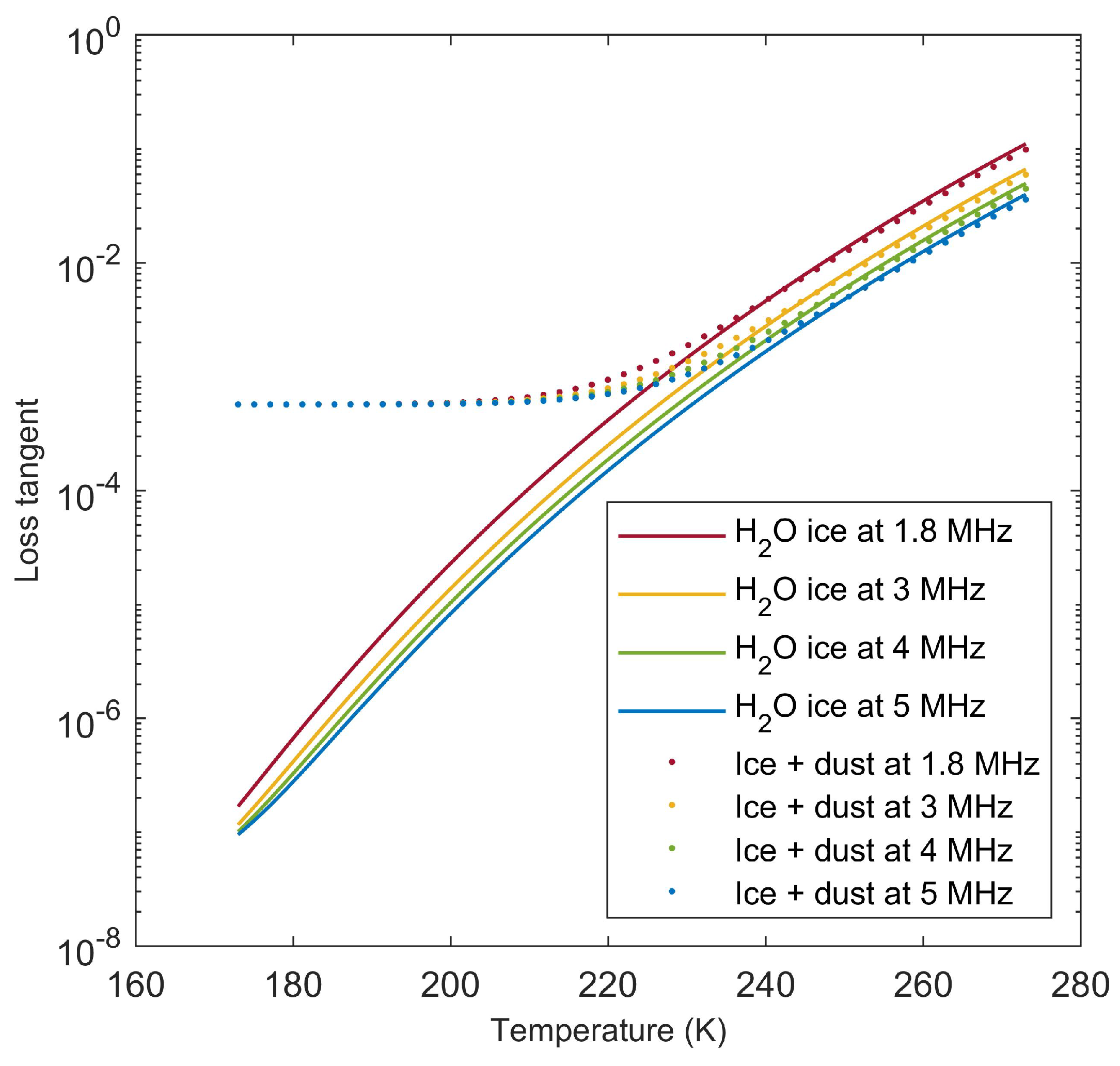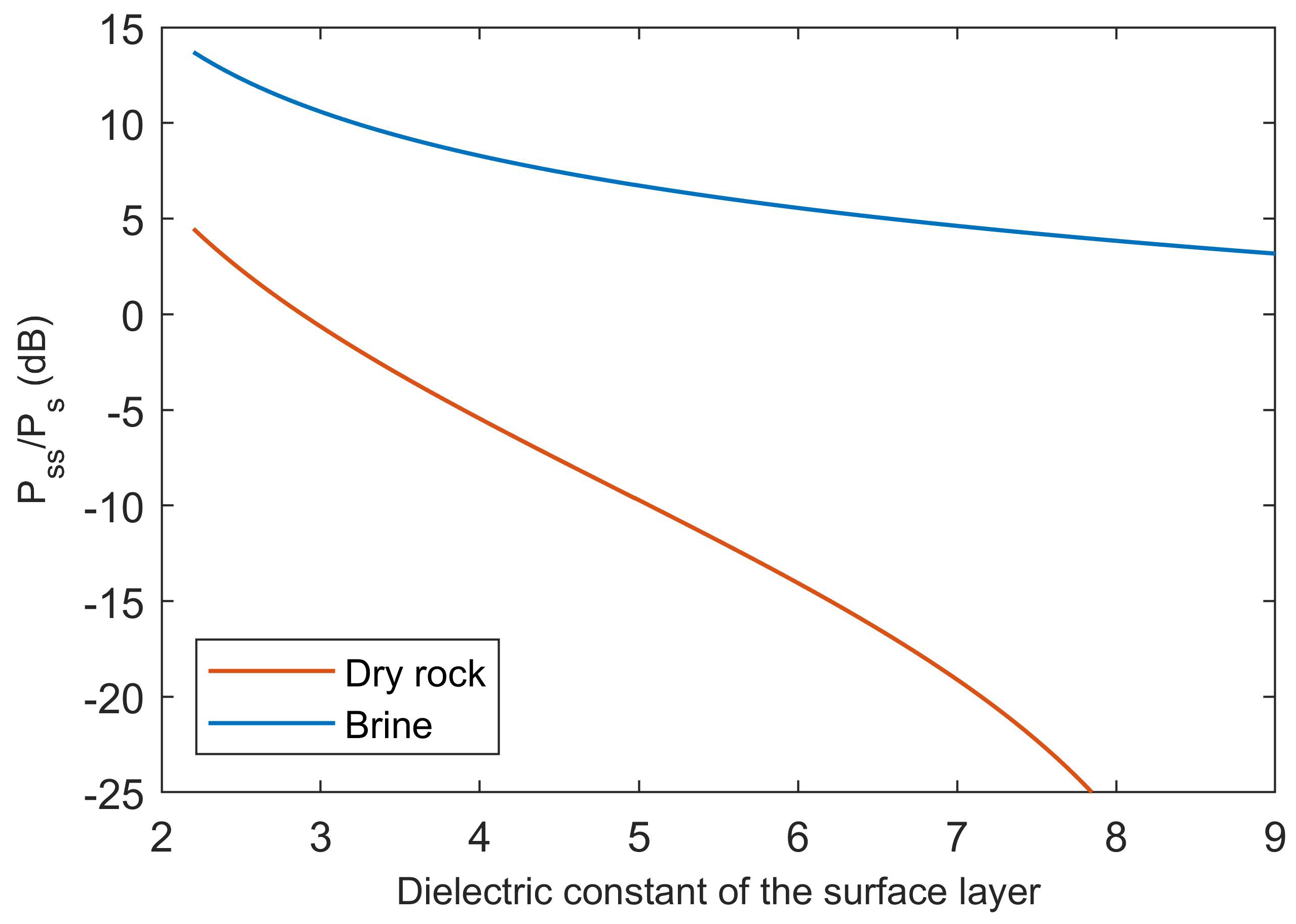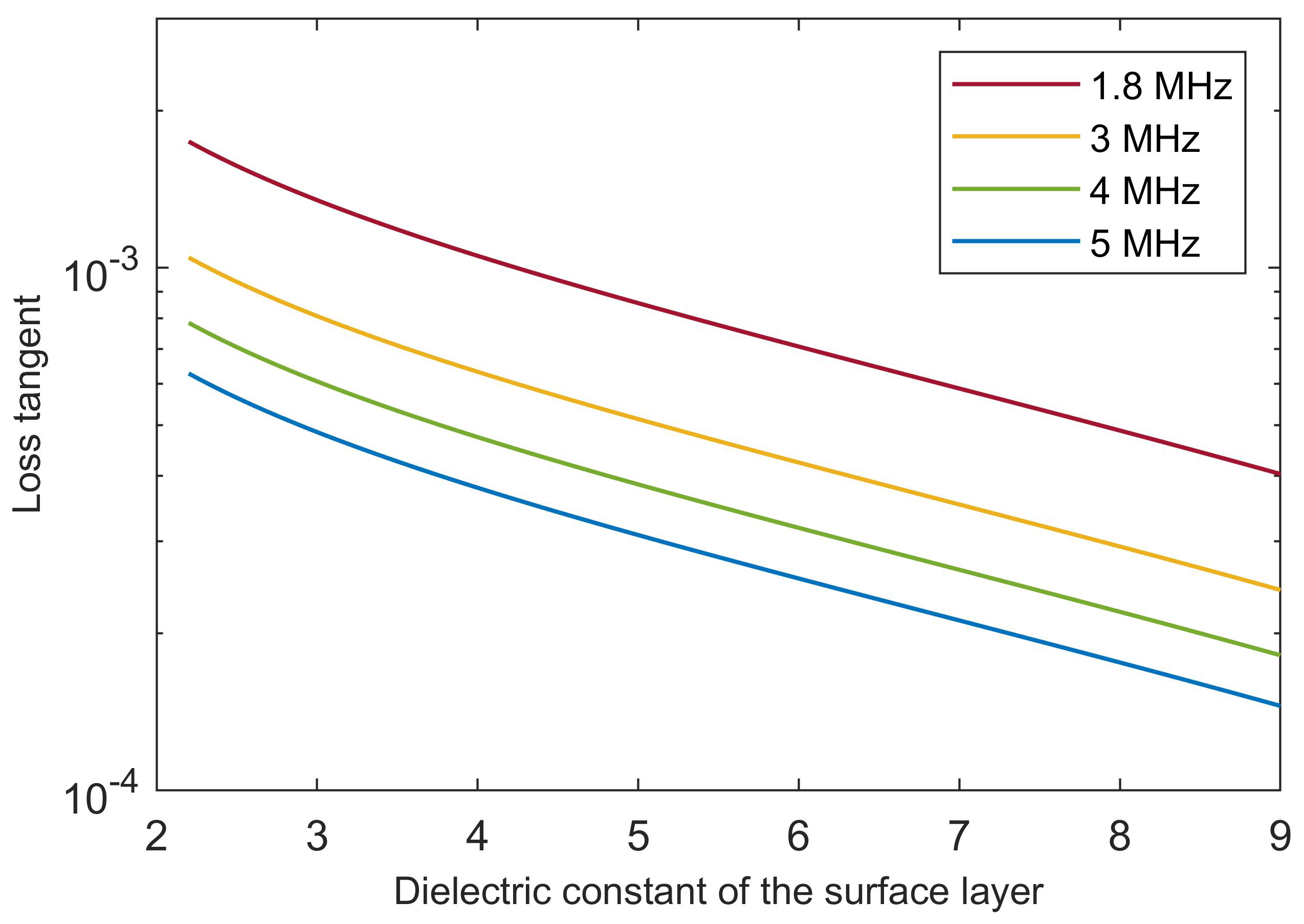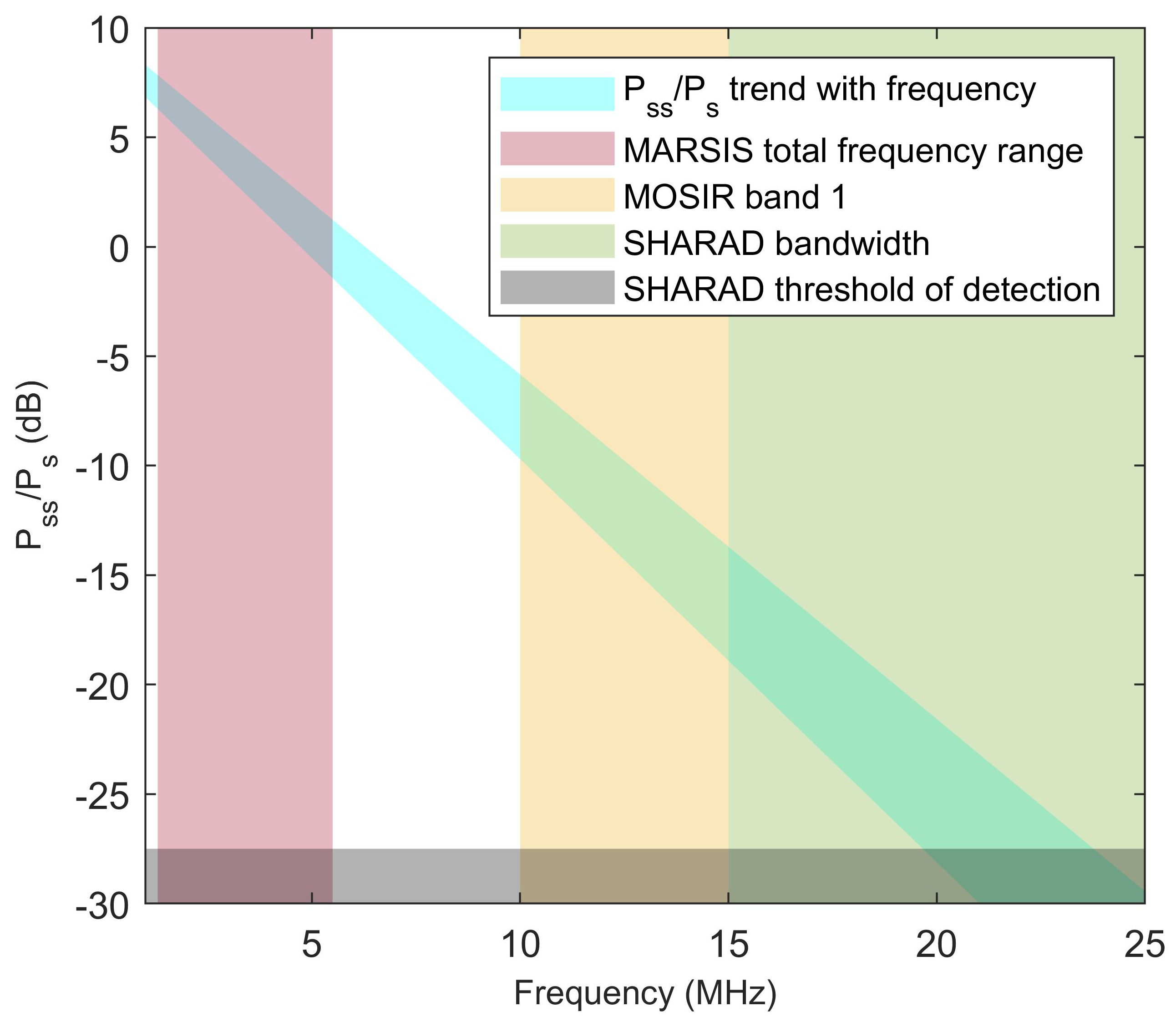The Global Search for Liquid Water on Mars from Orbit: Current and Future Perspectives
Abstract
1. Water Inventory on Mars
2. The Search for Liquid Water
3. Radar Sounding and Subsurface Water Detection
4. Conclusions and Perspectives
Author Contributions
Funding
Acknowledgments
Conflicts of Interest
References
- Smith, D.E.; Zuber, M.T.; Neumann, G.A. Seasonal Variations of Snow Depth on Mars. Science 2001, 294, 2141–2146. [Google Scholar] [CrossRef] [PubMed]
- Byrne, S. The Polar Deposits of Mars. Annu. Rev. Earth Planet. Sci. 2009, 37, 535–560. [Google Scholar] [CrossRef]
- Zuber, M.T.; Phillips, R.J.; Andrews-Hanna, J.C.; Asmar, S.-W.; Konopliv, A.S.; Lemoine, F.G.; Plaut, J.J.; Smith, D.E.; Smrekar, S.E. Density of Mars’ South Polar Layered Deposits. Science 2007, 317, 1718–1719. [Google Scholar] [CrossRef]
- Grima, C.; Kofman, W.; Mouginot, J.; Phillips, R.J.; Hérique, A.; Biccari, D.; Seu, R.; Cutigni, M. North polar deposits of Mars: Extreme purity of the water ice. Geophys. Res. Lett. 2009, 36, L03203. [Google Scholar] [CrossRef]
- Broquet, A.; Wieczorek, M.A.; Fa, W. Flexure of the Lithosphere Beneath the North Polar Cap of Mars: Implications for Ice Composition and Heat Flow. Geophys. Res. Lett. 2020, 47, e86746. [Google Scholar] [CrossRef]
- Phillips, R.J.; Davis, B.J.; Tanaka, K.L.; Byrne, S.; Mellon, M.T.; Putzig, N.E.; Haberle, R.M.; Kahre, M.A.; Campbell, B.A.; Carter, L.M.; et al. Massive CO2 Ice Deposits Sequestered in the South Polar Layered Deposits of Mars. Science 2011, 332, 838–841. [Google Scholar] [CrossRef] [PubMed]
- Fastook, J.L.; Head, J.W.; Marchant, D.R.; Forget, F.; Madeleine, J.-B. Early Mars climate near the Noachian-Hesperian boundary: Independent evidence for cold conditions from basal melting of the south polar ice sheet (Dorsa Argentea Formation) and implications for valley network formation. Icarus 2012, 219, 25–40. [Google Scholar] [CrossRef]
- Head, J.W.; Mustard, J.F.; Kreslavsky, M.A.; Milliken, R.E.; Marchant, D.R. Recent ice ages on Mars. Nature 2003, 426, 797–802. [Google Scholar] [CrossRef]
- Feldman, W.C.; Boynton, W.V.; Tokar, R.L.; Prettyman, T.H.; Gasnault, O.; Squyres, S.W.; Elphic, R.C.; Lawrence, D.J.; Lawson, S.L.; Maurice, S.; et al. Global Distribution of Neutrons from Mars: Results from Mars Odyssey. Science 2002, 297, 75–78. [Google Scholar] [CrossRef]
- Clifford, S.M. A model for the hydrologic and climatic behavior of water on Mars. J. Geophys. Res. 1993, 98, 10973–11016. [Google Scholar] [CrossRef]
- Carr, M.H.; Head, J.W. Martian surface/near-surface water inventory: Sources, sinks, and changes with time. Geophys. Res. Lett. 2015, 42, 726–732. [Google Scholar] [CrossRef]
- Plaut, J.J.; Picardi, G.; Safaeinili, A.; Ivanov, A.B.; Milkovich, S.M.; Cicchetti, A.; Kofman, W.; Mouginot, J.; Farrell, W.M.; Phillips, R.J.; et al. Subsurface Radar Sounding of the South Polar Layered Deposits of Mars. Science 2007, 316, 92–95. [Google Scholar] [CrossRef]
- Rosenberg, E.N.; Palumbo, A.M.; Cassanelli, J.P.; Head, J.W.; Weiss, D.K. The volume of water required to carve the martian valley networks: Improved constraints using updated methods. Icarus 2019, 317, 379–387. [Google Scholar] [CrossRef]
- Jakosky, B.M.; Brain, D.; Chaffin, M.; Curry, S.; Deighan, J.; Grebowsky, J.; Halekas, J.; Leblanc, F.; Lillis, R.; Luhmann, J.G.; et al. Loss of the Martian atmosphere to space: Present-day loss rates determined from MAVEN observations and integrated loss through time. Icarus 2018, 315, 146–157. [Google Scholar] [CrossRef]
- Dong, C.F.; Lee, Y.; Ma, Y.J.; Lingam, M.; Bougher, S.; Luhmann, J.; Curry, S.; Toth, G.; Nagy, A.; Tenishev, V.; et al. Modeling Martian Atmospheric Losses over Time: Implications for Exoplanetary Climate Evolution and Habitability. Astrophys. J. Lett. 2018, 859, L14. [Google Scholar] [CrossRef]
- Villanueva, G.L.; Mumma, M.J.; Novak, R.E.; Käufl, H.U.; Hartogh, P.; Encrenaz, T.; Tokunaga, A.; Khayat, A.; Smith, M.D. Strong water isotopic anomalies in the martian atmosphere: Probing current and ancient reservoirs. Science 2015, 348, 218–221. [Google Scholar] [CrossRef]
- Carr, M.H. Water on Mars; Oxford University Press: New York, NY, USA, 1996. [Google Scholar]
- Bibring, J.-P.; Langevin, Y. Mineralogy of the Martian surface from Mars Express OMEGA observations. In The Martian Surface—Composition, Mineralogy, and Physical Properties; Bell, J., III, Eds.; Cambridge University Press: New York, NY, USA, 2008; pp. 153–168. [Google Scholar]
- Malin, M.; Edgett, K. Evidence for recent groundwater seepage and surface runoff on Mars. Science 2000, 288, 2330–2335. [Google Scholar] [CrossRef]
- Jouannic, G.; Gargani, J.; Costard, F.; Ori, G.G.; Marmo, C.; Schmidt, F.; Lucas, A. Morphological and mechanical characterization of gullies in a periglacial environment: The case of the Russell crater dune (Mars). Planet. Space Sci. 2012, 71, 38–54. [Google Scholar] [CrossRef]
- Gulick, V.C.; Glines, N.; Hart, S.; Freeman, P. Geomorphological analysis of gullies on the central peak of Lyot Crater, Mars. Geol. Soc. Lond. Spec. Publ. 2018, 467, 233–265. [Google Scholar] [CrossRef]
- Conway, S.J.; Harrison, T.N.; Soare, R.J.; Britton, A.W.; Steele, L.J. New slope-normalized global gully density and orientation maps for Mars. Geol. Soc. Lond. Spec. Publ. 2017, 467, 187–197. [Google Scholar] [CrossRef]
- Conway, S.J.; de Haas, T.; Harrison, T.N. Martian gullies: A comprehensive review of observations, mechanisms and insights from Earth analogues. Geol. Soc. Lond. Spec. Publ. 2018, 467, 7–66. [Google Scholar] [CrossRef]
- McEwen, A.S.; Ojha, L.; Dundas, C.M.; Mattson, S.S.; Byrne, S.; Wray, J.J.; Cull, S.C.; Murchie, S.L.; Thomas, N.; Gulick, V.C. Seasonal Flows on Warm Martian Slopes. Science 2011, 333, 740–743. [Google Scholar] [CrossRef] [PubMed]
- Huber, C.; Ojha, L.; Lark, L.; Head III, J.W. Physical models and predictions for recurring slope lineae formed by wet and dry processes. Icarus 2020, 335, 113385. [Google Scholar] [CrossRef]
- Ojha, L.; Wilhelm, M.B.; Murchie, S.L.; McEwen, A.S.; Wray, J.J.; Hanley, J.; Massé, M.; Chojnacki, M. Spectral evidence for hydrated salts in recurring slope lineae on Mars. Nat. Geosci. 2015, 8, 829–832. [Google Scholar] [CrossRef]
- Pajola, M.; Cremonese, G.; Re, C.; Lucchetti, A.; Simioni, E.; McEwen, A.S.; Pommerol, A.; Becerra, P.; Conway, S.J.; Thomas, N.; et al. Implications for the origin and evolution of Martian Recurring Slope Lineae at Hale crater from CaSSIS observations. Planet. Space Sci. 2020, 187, 104947. [Google Scholar]
- Andrews-Hanna, J.C.; Phillips, R.J.; Zuber, M.T. Meridiani Planum and the Global Hydrology of Mars. Nature 2007, 446, 163–166. [Google Scholar] [CrossRef]
- Salese, F.; Pondrelli, M.; Neeseman, A.; Schmidt, G.; Ori, G.G. Geological Evidence of Planet-Wide Groundwater System on Mars. J. Geophys. Res. Planets 2019, 124, 374–395. [Google Scholar] [CrossRef]
- Clifford, S.M. Polar basal melting on Mars. J. Geophys. Res. 1987, 92, 9135–9152. [Google Scholar] [CrossRef]
- Clifford, S.M.; Lasue, J.; Heggy, E.; Boisson, J.; McGovern, P.; Max, M.D. Depth of the Martian cryosphere: Revised estimates and implications for the existence and detection of subpermafrost groundwater. J. Geophys. Res. 2010, 115, E07001. [Google Scholar] [CrossRef]
- Orosei, R.; Lauro, S.E.; Pettinelli, E.; Cicchetti, A.; Coradini, M.; Cosciotti, B.; Di Paolo, F.; Flamini, E.; Mattei, E.; Pajola, M.; et al. Radar evidence of subglacial liquid water on Mars. Science 2018, 361, 490–493. [Google Scholar] [CrossRef]
- Sori, M.M.; Bramson, A.M. Water on Mars, with a Grain of Salt: Local Heat Anomalies Are Required for Basal Melting of Ice at the South Pole Today. Geophys. Res. Lett. 2019, 46, 1222–1231. [Google Scholar] [CrossRef]
- Arnold, N.S.; Conway, S.J.; Butcher, F.E.G.; Balme, M.R. Modeled Subglacial Water Flow Routing Supports Localized Intrusive Heating as a Possible Cause of Basal Melting of Mars’ South Polar Ice Cap. J. Geophys. Res. Planets 2019, 124, 2101–2116. [Google Scholar] [CrossRef]
- Lauro, S.E.; Pettinelli, E.; Caprarelli, G.; Guallini, L.; Rossi, A.P.; Mattei, E.; Cosciotti, B.; Cicchetti, A.; Soldovieri, F.; Cartacci, M.; et al. Multiple subglacial water bodies below the South Pole of Mars unveiled by new MARSIS data. Nat. Astron. in press.
- Picardi, G.; Plaut, J.J.; Biccari, D.; Bombaci, O.; Calabrese, D.; Cartacci, M.; Cicchetti, A.; Clifford, S.M.; Edenhofer, P.; Farrell, W.M.; et al. Radar Soundings of the Subsurface of Mars. Science 2005, 310, 1925–1928. [Google Scholar] [CrossRef] [PubMed]
- Bogorodsky, V.V.; Bentley, C.R.; Gudmandsen, P.E. Radioglaciology; Reidel: Dordrecht, The Netherlands, 1985. [Google Scholar]
- Phillips, R.J.; Adams, G.F.; Brown, W.E., Jr.; Eggleton, R.E.; Jackson, P.; Jordan, R.; Linlor, W.I.; Peeples, W.J.; Porcello, L.J.; Ryu, J.; et al. Apollo Lunar Sounder Experiment. In Apollo 17: Preliminary Science Report; NASA SP-330; NASA: Washington, DC, USA, 1973; p. 22. [Google Scholar]
- Seu, R.; Phillips, R.J.; Alberti, G.; Biccari, D.; Bonaventura, F.; Bortone, M.; Calabrese, D.; Campbell, B.A.; Cartacci, M.; Carter, L.M.; et al. Accumulation and Erosion of Mars’ South Polar Layered Deposits. Science 2007, 317, 1715–1718. [Google Scholar] [CrossRef]
- Ono, T.; Kumamoto, A.; Nakagawa, H.; Yamaguchi, Y.; Oshigami, S.; Yamaji, A.; Kobayashi, T.; Kasahara, Y.; Oya, H. Lunar Radar Sounder Observations of Subsurface Layers Under the Nearside Maria of the Moon. Science 2009, 323, 909–912. [Google Scholar] [CrossRef]
- Kofman, W.; Herique, A.; Barbin, Y.; Barriot, J.-P.; Ciarletti, V.; Clifford, S.M.; Edenhofer, P.; Elachi, C.; Eyraud, C.; Goutail, J.-P.; et al. Properties of the 67P/Churyumov-Gerasimenko interior revealed by CONSERT radar. Science 2015, 349, aab0639-1–aab0639-6. [Google Scholar] [CrossRef]
- Stratton, J.A. Electromagnetic Theory; McGraw-Hill Book Company, Inc.: New York, NY, USA; London, UK, 1941. [Google Scholar]
- Porcello, L.J.; Jordan, R.L.; Zelenka, J.S.; Adams, G.F.; Phillips, R.J.; Brown, W.E., Jr.; Ward, S.H.; Jackson, P.L. The Apollo lunar sounder radar system. Proc. IEEE 1974, 62, 769–783. [Google Scholar] [CrossRef]
- Poulet, F.; Gomez, C.; Bibring, J.-P.; Langevin, Y.; Gondet, B.; Pinet, P.; Belluci, G.; Mustard, J. Martian surface mineralogy from Observatoire pour la Minéralogie, l’Eau, les Glaces et l’Activité on board the Mars Express spacecraft (OMEGA/MEx): Global mineral maps. J. Geophys. Res. 2007, 112, E08S02. [Google Scholar] [CrossRef]
- Rust, A.C.; Russell, J.K.; Knight, R.J. Dielectric constant as a predictor of porosity in dry volcanic rocks. J. Volcanol. Geotherm. Res. 1999, 91, 79–96. [Google Scholar] [CrossRef]
- Ulaby, F.T.; Moore, R.K.; Fung, A.K. Microwave Remote Sensing: Active and Passive; Artech House: Norwood, MA, USA, 1986; Volume 3. [Google Scholar]
- Mätzler, C. Microwave properties of ice and snow. In Solar System Ices; Schmitt, B., De Bergh, C., Festou, M., Eds.; Kluwer Academic Publishers: Dordrecht, The Netherlands, 1998; pp. 241–257. [Google Scholar]
- Pettinelli, E.; Vannaroni, G.; Cereti, A.; Paolucci, F.; Della Monica, G.; Storini, M.; Bella, F. Frequency and time domain permittivity measurements on solid CO2 and solid CO2-soil mixtures as Martian soil simulants. J. Geophys. Res. Planets 2003, 108, 8029. [Google Scholar] [CrossRef]
- Sihvola, A. Mixing Rules with Complex Dielectric Coefficients. Subsurf. Sens. Technol. Appl. 2000, 1, 393–415. [Google Scholar] [CrossRef]
- Guéguen, Y.; Palciauskas, V. Introduction to the Physics of Rocks; Princeton University Press: Princeton, NJ, USA, 1994. [Google Scholar]
- Carter, S.P.; Blankenship, D.D.; Peters, M.E.; Young, D.A.; Holt, J.W.; Morse, D.L. Radar–based subglacial lake classification in Antarctica. Geochem. Geophys. Geosyst. 2007, 8, Q03016. [Google Scholar] [CrossRef]
- Lauro, S.E.; Soldovieri, F.; Orosei, R.; Cicchetti, A.; Cartacci, M.; Mattei, E.; Cosciotti, B.; Di Paolo, F.; Noschese, R.; Pettinelli, E. Liquid Water Detection under the South Polar Layered Deposits of Mars—A Probabilistic Inversion Approach. Remote Sens. 2019, 11, 2445. [Google Scholar] [CrossRef]
- Smith, D.E.; Zuber, M.T.; Frey, H.V.; Garvin, J.B.; Head, J.W.; Muhleman, D.O.; Pettengill, G.H.; Phillips, R.J.; Solomon, S.C.; Zwally, H.J.; et al. Mars Orbiter Laser Altimeter: Experiment summary after the first year of global mapping of Mars. J. Geophys. Res. 2001, 106, 23689–23722. [Google Scholar] [CrossRef]
- Li, J.; Andrews-Hanna, J.C.; Sun, Y.; Phillips, R.J.; Plaut, J.J.; Zuber, M.T. Density variations within the south polar layered deposits of Mars. J. Geophys. Res. 2012, 117, E04006. [Google Scholar] [CrossRef]
- Farrell, W.M.; Plaut, J.J.; Cummer, S.A.; Gurnett, D.A.; Picardi, G.; Watters, T.R.; Safaeinili, A. Is the Martian water table hidden from radar view? Geophys. Res. Lett. 2009, 36, L15206. [Google Scholar] [CrossRef]
- Mouginot, J.; Kofman, W.; Safaeinili, A.; Grima, C.; Herique, A.; Plaut, J.J. MARSIS surface reflectivity of the south residual cap of Mars. Icarus 2009, 201, 454–459. [Google Scholar] [CrossRef]
- Picardi, G.; Biccari, D.; Seu, R.; Marinangeli, L.; Johnson, W.T.K.; Jordan, R.L.; Plaut, J.; Safaenili, A.; Gurnett, D.A.; Ori, G.G.; et al. Performance and surface scattering models for the Mars Advanced Radar for Subsurface and Ionosphere Sounding (MARSIS). Planet. Space Sci. 2004, 52, 149–156. [Google Scholar] [CrossRef]
- Zhang, Z.; Hagfors, T.; Nielsen, E.; Picardi, G.; Mesdea, A.; Plaut, J.J. Dielectric properties of the Martian south polar layered deposits: MARSIS data inversion using Bayesian inference and genetic algorithm. J. Geophys. Res. 2008, 113, E05004. [Google Scholar] [CrossRef]
- Lauro, S.E.; Mattei, E.; Soldovieri, F.; Pettinelli, E.; Orosei, R.; Vannaroni, G. Dielectric constant estimation of the uppermost Basal Unit layer in the martian Boreales Scopuli region. Icarus 2012, 219, 458–467. [Google Scholar] [CrossRef]
- Gurnett, D.A.; Huff, R.L.; Morgan, D.D.; Persoon, A.M.; Averkamp, T.F.; Kirchner, D.L.; Duru, F.; Akalin, F.; Kopf, A.J.; Nielsen, E.; et al. An overview of radar soundings of the martian ionosphere from the Mars Express spacecraft. Adv. Space Res. 2008, 41, 1335–1346. [Google Scholar] [CrossRef]
- Li, C.L.; Liu, J.; Geng, Y.; Cao, J.; Zhang, T.; Fang, G.; Yang, J.; Shu, R.; Zou, Y.; Lin, Y.; et al. Scientific Objectives and Payload Configuration of China’s First Mars Exploration Mission. J. Deep Space Explor. 2018, 5, 406–413. [Google Scholar]
- Hamran, S.-E.; Amundsen, H.E.F.; Asak, L.; Berger, T.; Brovoll, S.; Buskenes, J.I.; Carter, L.; Damsgård, L.; Diaz, C.; Ghent, R.; et al. The RIMFAX GPR Instrument Development for the Mars 2020 Rover Mission. In Proceedings of the 3rd International Workshop on Instrumentation for Planetary Mission, Pasadena, CA, USA, 24–27 October 2016. Abstract # 4031. [Google Scholar]
- Zhou, B.; Shen, S.X.; Ji, Y.C.; Lu, W.; Zhang, F.; Fang, G.Y.; Su, Y.; Dai, S. The subsurface penetrating radar on the rover of China’s Mars 2020 mission. In Proceedings of the 16th International Conference on Ground Penetrating Radar (GPR), Hong Kong, China, 13–16 June 2016. [Google Scholar] [CrossRef]
- Ciarletti, V.; Clifford, S.; Plettemeier, D.; Le Gall, A.; Hervé, Y.; Dorizon, S.; Quantin-Nataf, C.; Benedix, W.-S.; Schwenzer, S.; Pettinelli, E.; et al. The WISDOM Radar: Unveiling the Subsurface Beneath the ExoMars Rover and Identifying the Best Locations for Drilling. Astrobiology 2017, 17, 565–584. [Google Scholar] [CrossRef]
- Grimm, R.E.; Berdanier, B.; Warden, R.; Harrer, J.; Demara, R.; Pfeiffer, J.; Blohm, R. A time-domain electromagnetic sounder for detection and characterization of groundwater on Mars. Planet. Space Sci. 2009, 57, 1268–1281. [Google Scholar] [CrossRef]
- Stamenković, V.; Beegle, L.; Zacny, K.; Arumugam, D.; Baglioni, P.; Barba, N.; Baross, J.; Bell, M.; Bhartia, R.; Blank, J.; et al. The next frontier for planetary and human exploration. Nat. Astron. 2019, 3. [Google Scholar] [CrossRef]
- Cockell, C. Trajectories of martian habitability. Astrobiology 2014, 14, 182–203. [Google Scholar] [CrossRef]





© 2020 by the authors. Licensee MDPI, Basel, Switzerland. This article is an open access article distributed under the terms and conditions of the Creative Commons Attribution (CC BY) license (http://creativecommons.org/licenses/by/4.0/).
Share and Cite
Orosei, R.; Ding, C.; Fa, W.; Giannopoulos, A.; Hérique, A.; Kofman, W.; Lauro, S.E.; Li, C.; Pettinelli, E.; Su, Y.; et al. The Global Search for Liquid Water on Mars from Orbit: Current and Future Perspectives. Life 2020, 10, 120. https://doi.org/10.3390/life10080120
Orosei R, Ding C, Fa W, Giannopoulos A, Hérique A, Kofman W, Lauro SE, Li C, Pettinelli E, Su Y, et al. The Global Search for Liquid Water on Mars from Orbit: Current and Future Perspectives. Life. 2020; 10(8):120. https://doi.org/10.3390/life10080120
Chicago/Turabian StyleOrosei, Roberto, Chunyu Ding, Wenzhe Fa, Antonios Giannopoulos, Alain Hérique, Wlodek Kofman, Sebastian E. Lauro, Chunlai Li, Elena Pettinelli, Yan Su, and et al. 2020. "The Global Search for Liquid Water on Mars from Orbit: Current and Future Perspectives" Life 10, no. 8: 120. https://doi.org/10.3390/life10080120
APA StyleOrosei, R., Ding, C., Fa, W., Giannopoulos, A., Hérique, A., Kofman, W., Lauro, S. E., Li, C., Pettinelli, E., Su, Y., Xing, S., & Xu, Y. (2020). The Global Search for Liquid Water on Mars from Orbit: Current and Future Perspectives. Life, 10(8), 120. https://doi.org/10.3390/life10080120







